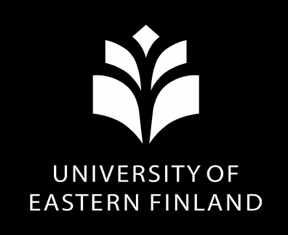Home > Press > New protocol for assessing the safety of nanomaterials
 |
Abstract:
A recent paper published in Nature Protocols introduces a complete and comprehensive protocol for analysing nanomaterials in humans and organisms to support the safety of these engineered small materials.
New protocol for assessing the safety of nanomaterials
Kuopio, Finland | Posted on July 1st, 2022Engineered nanomaterials have the potential to revolutionise many industries, and they are used in many sectors in society, such as medicine and computing. When developing sustainable nanotechnology, safety and targeting ability are important factors. Designing safe and efficient engineered nanomaterials for different applications requires understanding of how they behave in a given system, and how they interact with their surroundings.
To assess the safety of engineered nanomaterials and to evaluate and improve their targeting ability for medical application, the researchers present a method for analysing the fate and behaviour of engineered nanomaterials in biological media, including in a single cell, a cell layer, tissue, organ and physiological media (e.g., blood, gut content, haemolymph) of different (micro)organisms, such as bacteria, animals and plants. The new protocol presents a workflow that allows researchers to determine, characterize and quantify metal-bearing nanomaterials in biological tissues and cells, and quantify their dynamic behaviour at trace-level concentrations.
Unlike previous methods, the protocol uses no fluorescent dyes or radiolabels to trace metal-bearing engineered nanomaterials in tissues and cells. The results facilitate an understanding of the biological fate of metal-bearing engineered nanomaterials and their dynamic behaviour in, e.g., human tissues.
“This is the first comprehensive protocol for analysing what happens to nanoparticles in humans and organisms after use. This is an important step in understanding how nanomaterials behave, hopefully allowing nanotechnology to reach its full potential one day,” Researcher and lead author Fazel Monikh from the University of Eastern Finland says.
####
For more information, please click here
Contacts:
Media Contact
Maj Vuorre
University of Eastern Finland
Office: 358-504-303-880
Expert Contact
Fazel Monikh
University of Eastern Finland
Cell: +358505281646
Copyright © University of Eastern Finland
If you have a comment, please Contact us.Issuers of news releases, not 7th Wave, Inc. or Nanotechnology Now, are solely responsible for the accuracy of the content.
| Related Links |
| Related News Press |
News and information
![]() Researchers develop molecular qubits that communicate at telecom frequencies October 3rd, 2025
Researchers develop molecular qubits that communicate at telecom frequencies October 3rd, 2025
![]() Next-generation quantum communication October 3rd, 2025
Next-generation quantum communication October 3rd, 2025
![]() "Nanoreactor" cage uses visible light for catalytic and ultra-selective cross-cycloadditions October 3rd, 2025
"Nanoreactor" cage uses visible light for catalytic and ultra-selective cross-cycloadditions October 3rd, 2025
Possible Futures
![]() Spinel-type sulfide semiconductors to operate the next-generation LEDs and solar cells For solar-cell absorbers and green-LED source October 3rd, 2025
Spinel-type sulfide semiconductors to operate the next-generation LEDs and solar cells For solar-cell absorbers and green-LED source October 3rd, 2025
Discoveries
![]() Researchers develop molecular qubits that communicate at telecom frequencies October 3rd, 2025
Researchers develop molecular qubits that communicate at telecom frequencies October 3rd, 2025
![]() Next-generation quantum communication October 3rd, 2025
Next-generation quantum communication October 3rd, 2025
![]() "Nanoreactor" cage uses visible light for catalytic and ultra-selective cross-cycloadditions October 3rd, 2025
"Nanoreactor" cage uses visible light for catalytic and ultra-selective cross-cycloadditions October 3rd, 2025
Materials/Metamaterials/Magnetoresistance
![]() First real-time observation of two-dimensional melting process: Researchers at Mainz University unveil new insights into magnetic vortex structures August 8th, 2025
First real-time observation of two-dimensional melting process: Researchers at Mainz University unveil new insights into magnetic vortex structures August 8th, 2025
![]() Researchers unveil a groundbreaking clay-based solution to capture carbon dioxide and combat climate change June 6th, 2025
Researchers unveil a groundbreaking clay-based solution to capture carbon dioxide and combat climate change June 6th, 2025
![]() A 1960s idea inspires NBI researchers to study hitherto inaccessible quantum states June 6th, 2025
A 1960s idea inspires NBI researchers to study hitherto inaccessible quantum states June 6th, 2025
![]() Institute for Nanoscience hosts annual proposal planning meeting May 16th, 2025
Institute for Nanoscience hosts annual proposal planning meeting May 16th, 2025
Announcements
![]() Rice membrane extracts lithium from brines with greater speed, less waste October 3rd, 2025
Rice membrane extracts lithium from brines with greater speed, less waste October 3rd, 2025
![]() Researchers develop molecular qubits that communicate at telecom frequencies October 3rd, 2025
Researchers develop molecular qubits that communicate at telecom frequencies October 3rd, 2025
![]() Next-generation quantum communication October 3rd, 2025
Next-generation quantum communication October 3rd, 2025
![]() "Nanoreactor" cage uses visible light for catalytic and ultra-selective cross-cycloadditions October 3rd, 2025
"Nanoreactor" cage uses visible light for catalytic and ultra-selective cross-cycloadditions October 3rd, 2025
Interviews/Book Reviews/Essays/Reports/Podcasts/Journals/White papers/Posters
![]() Spinel-type sulfide semiconductors to operate the next-generation LEDs and solar cells For solar-cell absorbers and green-LED source October 3rd, 2025
Spinel-type sulfide semiconductors to operate the next-generation LEDs and solar cells For solar-cell absorbers and green-LED source October 3rd, 2025
![]() Rice membrane extracts lithium from brines with greater speed, less waste October 3rd, 2025
Rice membrane extracts lithium from brines with greater speed, less waste October 3rd, 2025
Safety-Nanoparticles/Risk management
![]() Onion-like nanoparticles found in aircraft exhaust May 14th, 2025
Onion-like nanoparticles found in aircraft exhaust May 14th, 2025
![]() Closing the gaps — MXene-coating filters can enhance performance and reusability February 28th, 2025
Closing the gaps — MXene-coating filters can enhance performance and reusability February 28th, 2025
|
|
||
|
|
||
| The latest news from around the world, FREE | ||
|
|
||
|
|
||
| Premium Products | ||
|
|
||
|
Only the news you want to read!
Learn More |
||
|
|
||
|
Full-service, expert consulting
Learn More |
||
|
|
||








